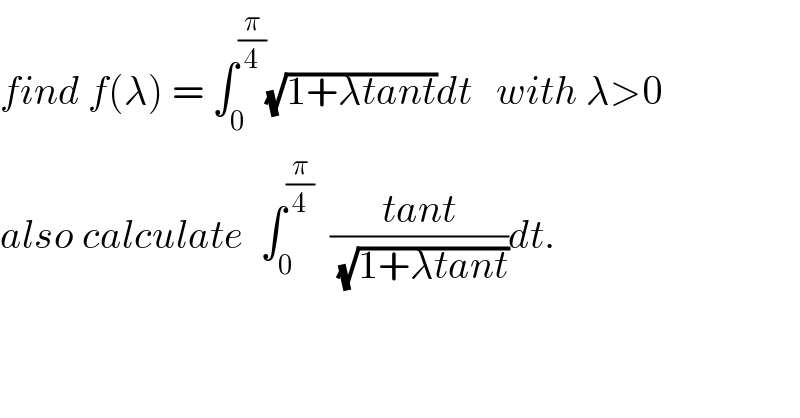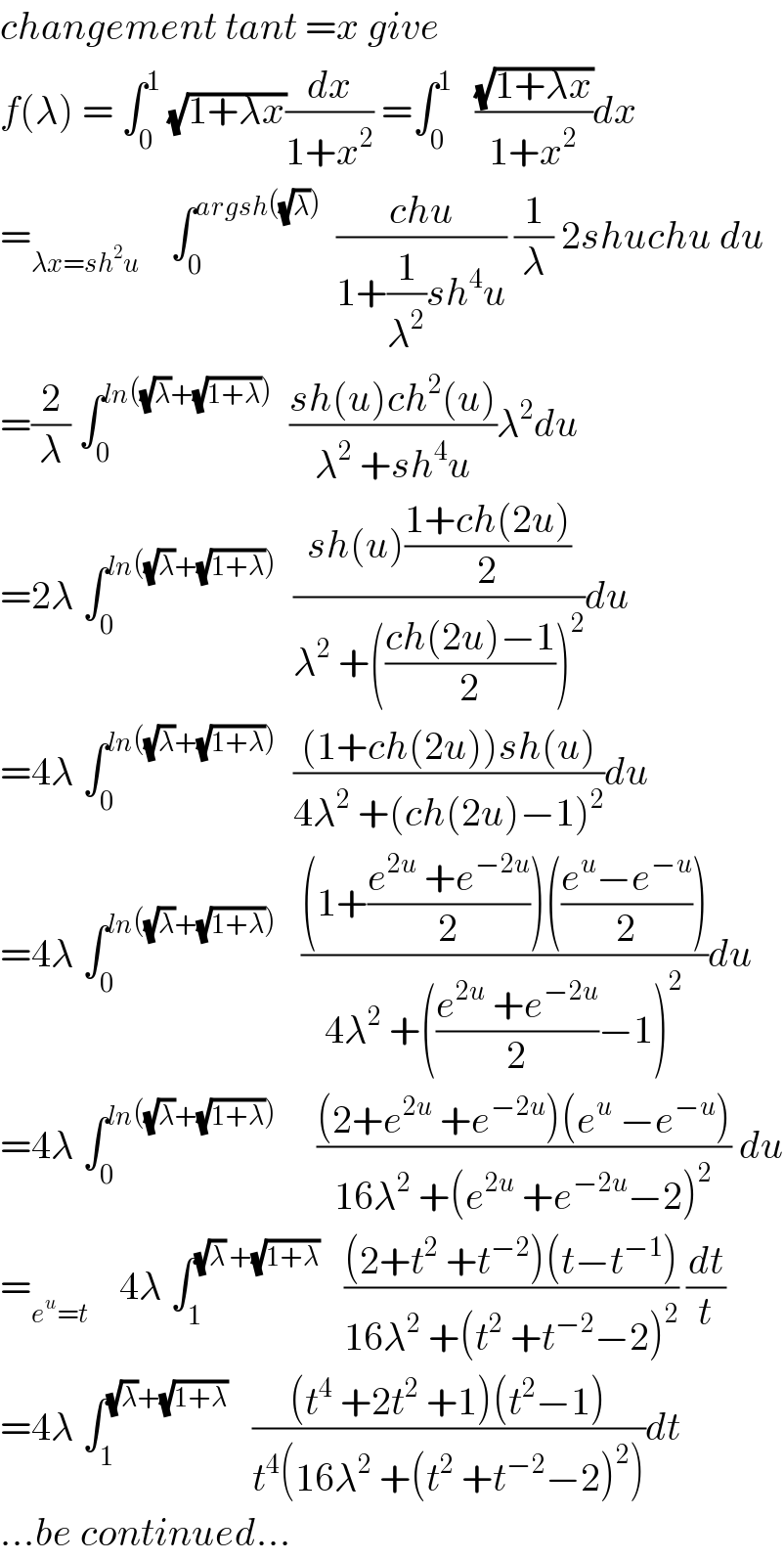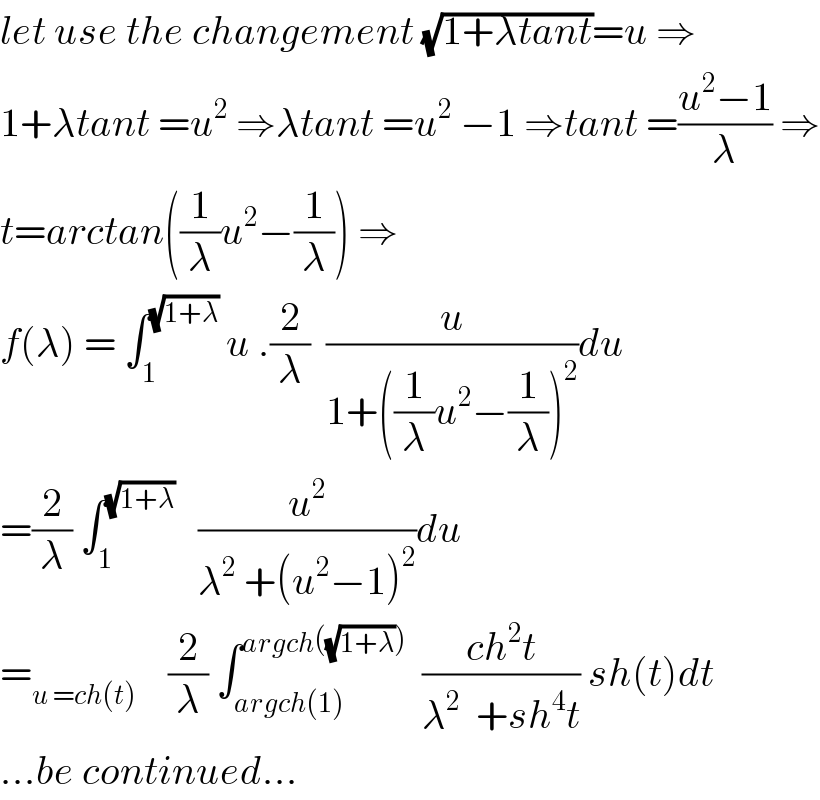Question Number 51551 by maxmathsup by imad last updated on 28/Dec/18

Commented by Abdo msup. last updated on 29/Dec/18

Commented by Abdo msup. last updated on 29/Dec/18

Answered by tanmay.chaudhury50@gmail.com last updated on 29/Dec/18
![g(t)=(√(1+λtant)) g(0)=1 g((π/4))=(√(1+λ)) ∫_0 ^(π/4) (√(1+λtant)) dt≈(1/2)(1+(√(1+λ)) )×(π/4) ∫_0 ^(π/4) (√(1+λtant)) dt≈(π/8)(1+(√(1+λ)) )[approxmitation]](https://www.tinkutara.com/question/Q51615.png)
Answered by tanmay.chaudhury50@gmail.com last updated on 29/Dec/18
![g(t)=(√(1+λtant)) g(0)=1 g((π/4))=(√(1+λ)) ∫_0 ^(π/4) (√(1+λtant)) dt≈(1/2)(1+(√(1+λ)) )×(π/4) ∫_0 ^(π/4) (√(1+λtant)) dt≈(π/8)(1+(√(1+λ)) )[approxmitation]](https://www.tinkutara.com/question/Q51616.png)
